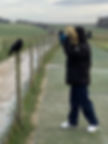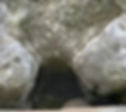The Natural World of Stonehenge
6 min readStonehenge sits on Salisbury Plain, a unique chalk ridge which covers much of Wiltshire and which is left mostly undisturbed as it is...
Stonehenge sits on Salisbury Plain, a unique chalk ridge which covers much of Wiltshire and which is left mostly undisturbed as it is primarily military land, used for training and housing thousands of troops. This makes it the perfect place for wildlife and it is home to countless rare species of flora, fauna and fungi. A visit to the area can be about far more than stone circles when you look around you to see what is living amongst the stones and barrows.

Stonehenge is often seen in isolation from the landscape around it, with all of the attention on the stones and what they meant to their original builders. Surrounded by ropes and security guards, it is easy to think of it as an entirely separate entity, yet the natural world, much like the original builders, does not recognise those recent man-made boundaries. For several species, Stonehenge is just home, a place to get treats from careless picnickers, or a location to visit on a long migration across the globe.
All of those species, whether a jackdaw who lives in the lintels, a fungi who slowly creeps across the rocks or a butterfly who pops by over the summer, have a completely different view of those historic and ancient stones, and an appreciation of them can bring a whole new perspective to a visit to Stonehenge.
Corvids: The Guardians of Stonehenge
Salisbury Plain can be a bleak and forbidding place with a marked absence of much visible life, but the flock of ravens, jackdaws and crows keep the scene alive with their endless flight and fussing over the stones. In season you can watch the jackdaws nest, dropping twigs down the hole of a lintel until one catches on the sides and can be used as the basis for a nest. The rest perch on fence posts or casually stroll amongst and upon the stones, as if they know that their audience can’t.

Visitors are often surprised by the presence of the corvids which live in that lonely spot, and have done so for centuries, leading to them being seen as the ‘Guardians of the Stones’.
Not only can you see them flying over the stones and battling over twigs, they can get quite close to people, always on the lookout for an edible treat and having little fear of the intruders into their ancient home.
“Another very unlikely spot is made use of by daws as a place to breed in, and that is Stonehenge.
These birds deposit their nests in the interstices between the upright and the impost stones of that amazing work of antiquity: which circumstance alone speaks the prodigious height of the upright stones, that they should be tall enough to secure those nests from the annoyance of shepherd-boys, who are always idling round that place”.
Gilbert White: Natural Histories and Antiquities of Selborne, 1788
Those of a more mystical persuasion interpret their presence as spiritually significant. Some see them as harbingers of death, and according to Druid tradition they’re believed to bring about new changes (death to one phase of your life and the birth to another).

Like anything to do with Stonehenge, the birds are not without controversy, as in recent years English Heritage have put mesh in some of the holes in the trilithons in an attempt to prevent nesting.
This was noticed by an eagle eyed member of the public who tweeted about it to raise awareness, then submitted a Freedom Of Information request to find out what was going on.
The heavily redacted documents confirm that they were indeed trying to prevent the birds from nesting in their traditional homes, but the reason was to protect the rare lichens which grow on the stones.
Rare Lichen: Seawater on the stones
Although it is widely accepted that Stonehenge is a mystery which will never be truly known, one of its lesser known mysteries is the presence of ancient lichen which can only usually be found by the sea. The stones are home to over 80 species of lichen; seven of them nationally rare and two of them exceptionally rare. One of these was identified in 1951 as “very rich, active and nearly pure unialgal growths of Hæmatococcus dræbakensis. I believed then that this alga was known only from pools in granite on a small island near Drobak in Norway ; I have learnt since that there is one doubtful record from Wales.” (source)
There are various explanations for its presence, the one that is the most exciting that the lichen was already present on the stones when they were transported to the Plain, having been washed in seawater. The more prosaic and likely explanation though is that they found their way here due to the way the stones are exposed to the elements on the Plain and that there is enough salt in the air coming off the coast to create their ideal living conditions. That being said, there is a good 30 miles between Stonehenge and the sea, and there are no other salt loving species to be found in the area, so they mystery remains.
The lichen is currently being investigated by experts and there may be an answer yet.
The Great Bustard: Back from the Brink
Extinct in the UK after the last bird was shot in 1832, in recent years young birds have been hand reared and released onto Salisbury Plain, with a fair few sightings of them wandering around Stonehenge.
The Great Bustard is one of the most elusive in the country as well as the heaviest flying bird in the world (up to 44lbs), and was once a common sight over the grassy plains of Wiltshire.
The RSPB ran a project to reintroduce them in 2004, importing them from Russia with little success as they kept migrating back there, so eggs were then imported from Spain, whose Great Bustards were more similar in nature to those who had once been native to the UK and who were less inclined to migrate such great distances. The project has slowly become a success and is now monitored by the Great Bustard Group. Based in nearby Amesbury, you can visit their hide to see Bustards, or pay just £20 to spend 2 hours to have a guided tour of the project site and the hides, with all money going towards their upkeep and preservation.
The Stone Curlew: Teetering on the brink
There are two distinct populations of Stone Curlew in Britian – East Anglia and Wessex, and of these, Salisbury Plain and nearby Porton Down are particular strongholds.

These areas are extremely important because they are relatively untouched by modern farming practices and remain the only area of level chalk grassland to have survived in the whole of Northwest Europe, the rest going under the plough. The RSPB set up the Stone Curlew recovery project in 1980s.
The project monitors nests, rings chicks and keeps a watchful eye on breeding sites throughout the season. With help from the military who own much of the Plain and who run their own conservation programmes, they have worked successfully with farmers to double the population in recent years.
Salisbury Plain is also home to many rare species of plants including orchids and grasses, as well as rare butterflies, insects and moths, many of whom can only survive in the unique, undisturbed chalklands of the hundreds of miles surrounding the stones. A visit to Stonehenge does not just have to be a quick sprint around the stones: you can walk around the woodlands and plains to find far more on offer.
Walk from Woodhenge to Stonehenge >>
Visiting Stonehenge: Your Questions Answered >>
Four different ways to see Stonehenge and how to see it for free >>


